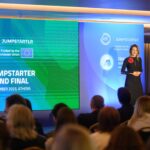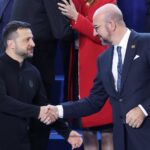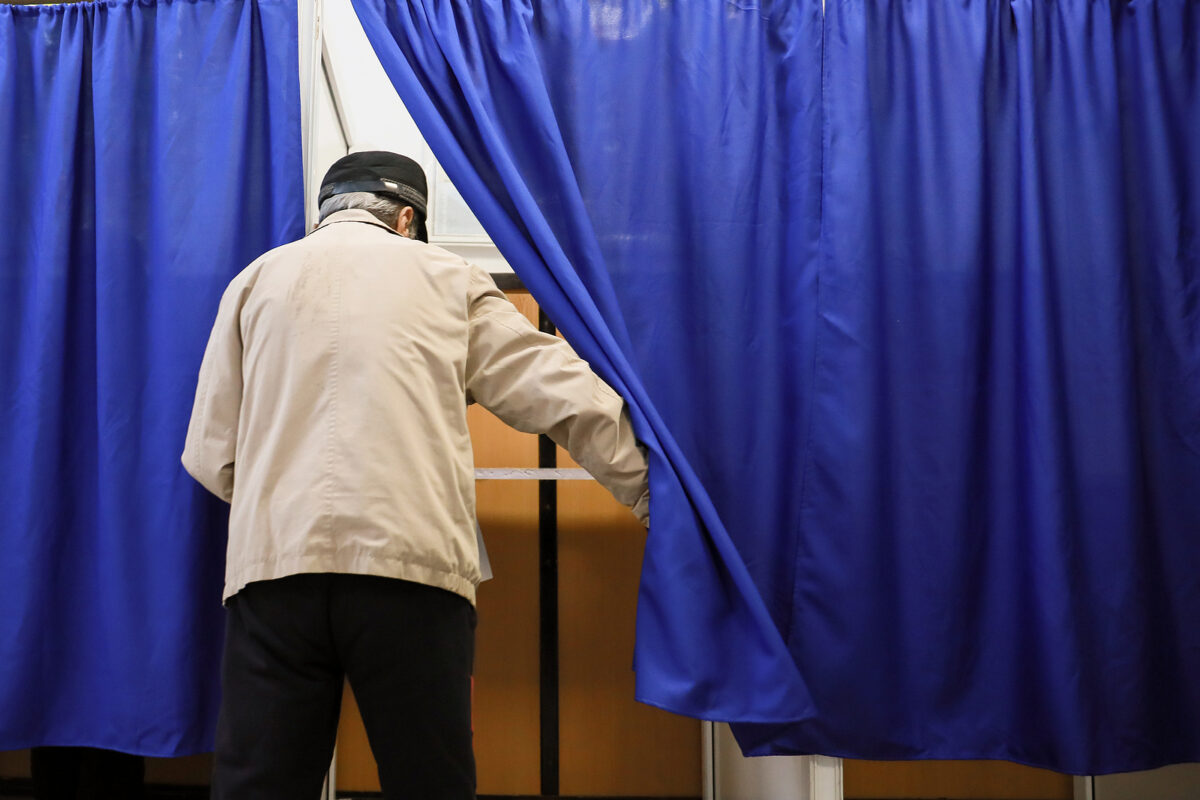Just a few days before Romania begins a three-week electoral marathon, there’s little sign of political fervour on the streets of the country’s capital, Bucharest.
Campaign rules mean that the faces of the various candidates hoping to become Romania’s new president—faces which for months, before the campaign began, dominated the country’s billboards—have all but disappeared. Only a few small posters in specially-designated places betray the fact that Romanians will soon vote on three consecutive Sundays.
Nor is the ordinary Romanian particularly concerned with the forthcoming elections. During a brief wintry shower last weekend (increasingly rare in these parts) a long queue of drivers was waiting patiently at an auto repair shop to change their summer tyres for winter ones. Talk was of the rising cost of changing tyres, not the elections.
Of eight people asked about their voting intentions in the most unscientific of polls, only two said they would definitely be voting. A couple had no idea which election came first: presidential or parliamentary.
Three weeks, three elections
On November 24, Romanians vote in the first round of presidential elections. Unless one of the 14 candidates manages to gain more than 50 per cent of the vote (highly unlikely), a run-off, between the two leading candidates from the first round, will be held a fortnight later.
Sandwiched in between, on December 1, is the parliamentary election.
Favourite to become Romania’s next president (the incumbent, Klaus Iohannis, is coming to the end of his second term and cannot run for a third) is the country’s prime minister, Marcel Ciolacu.
Leader of Romania’s largest party, the Social Democrats (PSD), Ciolacu will benefit from the PSD’s well-oiled electoral machine that usually ensures its supporters turnout in large numbers. Polls, largely unreliable in Romania, give him a nevertheless (probably) accurate 25-30 per cent of vote.
Who will face Ciolacu in the run-off is less clear. Most polls suggest that George Simion, leader of the far-right Alliance for the Union of Romanians (AUR), will contest the second round. Ciolacu would certainly prefer to face a far-right candidate—only once in the last 30 years has the PSD won the presidency, in 2000, when Ion Iliescu defeated the far-right’s Corneliu Vadim Tudor.
Indeed, that Ciolacu would almost certainly defeat Simion has led to suggestions that last month’s decision by the country’s constitutional court to bar another far-right candidate from standing, MEP Diana Șoșoacă, was politically motivated. The court ruled that Șoșoacă, openly pro-Russia, would put Romania’s membership of both the EU and NATO in jeopardy.
While Șoșoacă stood little chance of making the second round of voting, her presence on the ballot would have split the far-right vote, opening the way for either Elena Lasconi, leader of the broadly progressive Save Romania Union (USR) or, perhaps, Mircea Geoană, a former PSD leader, most recently deputy secretary-general of NATO, running as an independent. Both would at the very least give Ciolacu a run for his money.
Another candidate, Nicolae Ciucă of the Liberal party (PNL), which currently governs Romania in coalition with the PSD, is deeply unpopular and stands little chance of causing an upset. Ciucă has been widely derided for campaigning on an anti-PSD platform while simultaneously sharing government with the same party.
Geoană’s campaign too has failed to pick up any real steam, meaning that if Simion is to be beaten into second place, it will be Lasconi (whose more conservative positions on issues such as LGBT+ rights and abortion have at times put her at odds with her party) who does so. Most people, however, appear resigned to a Ciolacu-Simion run off, and a subsequent Ciolacu victory.
A campaign short on policy
A parliamentary republic, Romania’s president has little real power, although he (or she) does appoint the country’s prime minister and represents Romania on the European and global stage, such as meetings of the Council of the European Union.
Iohannis’s predecessor, the combative Traian Băsescu, also used the position to set the country’s political agenda. Iohannis, elected in 2014 on a wave of hope for real change, quickly became content merely to enjoy the luxuries of office, and has rarely rocked the boat.
A Ciolacu presidency will likely change little, and, given that the make-up of Romania’s parliament will broadly remain unchanged post-December 1, neither would a Lasconi presidency.
As such, there has been precious little talk of policy during the election campaign, which has at times resembled a non-event.
Both Lasconi and Geoană have made vague pledges to reform Romania’s enormously bloated and highly-centralised state apparatus, devolving some power to its regions, but without parliamentary majorities to back them, doing so would be all but impossible.
The only candidate to make any real promises has been Simion, most of them populist and impossible to keep. He has at various times promised Romanians cheap apartments, lower mortgage rates, and massive tax cuts.
As you were
That the PSD will win the parliamentary election, with around 30 per cent of the vote, is not in doubt. Second place is up for grabs, however, with AUR, USR, and PNL all vying for position. One poll last week gave AUR (20.7 per cent) a healthy lead over both the PNL (16.2 per cent) and USR (12.7 per cent), but the race is almost certainly tighter.
As president, Ciolacu would like to see the current PSD-PNL coalition remain in office—preferably with a PNL prime minister, at least initially, given that the government will introduce major tax rises in 2025 to deal with Romania’s spiralling budget deficit, forecast to top eight per cent by the end of this year. The only major issue on which the two parties genuinely disagree is whether Romania should keep its flat tax rate (the PNL preference) or introduce progressive taxation (the PSD choice). Both accept that taxes need to rise, however, as both are equally reluctant to cut public spending.
The incoming government will also face sluggish growth (now forecast by the European Commission at just 1.4 per cent in 2024) and the EU’s highest rate of inflation, almost five per cent. It’s not only the price of changing tyres that is rising fast.
However, the parliamentary maths might make such a coalition impossible, given that there is no guarantee the two parties will, combined, take a majority of seats. Much could depend on how many smaller parties make the five per cent parliamentary threshold. Besides PSD, PNL, and USR, Șoșoacă’s SOS Romania (which has been allowed to field candidates despite its leader’s disqualification) is currently the only other party polling over five per cent.
The UDMR, which represents Romania’s ethnic Hungarian minority, polls just under five per cent but usually finds a way to ensure its supporters turn out in sufficient numbers to make the threshold.
REPER and SENS, more progressive offshoots of the USR, as well as a couple of small right-wing parties, will almost certainly fail to do so. That could mean as many as 15-20 per cent of the seats in parliament will be redistributed to those parties who do make it. That could be enough to give the PSD-PNL a majority, perhaps with the always compliant UDMR co-opted to make up any shortfall.
A government averse to change
A continuation of PSD-PNL is few people’s idea of an ideal government. Its fondness for the stagnant, if stable status quo that suits both parties deprives Romania of any impetus for real reform. It will continue to ensure its base of pensioners and civil servants is well looked after, with the private sector expected to fund the deficit.
Creaking infrastructure, such as the failing health service and Romania’s achingly slow railways, will go largely unimproved, although recent movement on motorway construction (pushed by the need to develop better links with Ukraine) should continue.
A once promising (if poorly executed) campaign to streamline and digitalise public services has ground to a halt in recent years, and is unlikely to be a priority again any time soon for a government averse to change. That neighbouring Moldova (and, indeed, war-torn Ukraine) has greatly surpassed Romania in its digitalisation of public services speaks volumes.
On foreign policy Romania will continue to quietly support Kyiv in its fight against Russia’s invasion while boosting its own military capabilities as an increasingly key player on NATO’s Eastern Flank. A Ciolacu presidency could see Romania take a friendlier approach towards China, however.
The nightmare scenario
For all its faults, a renewed PSD-PNL coalition is far better than the nightmare scenario of AUR—which would immediately seek to end support for Ukraine and make Romania an EU pariah, along with Hungary—taking cabinet posts in a coalition with PSD.
Ciolacu has repeatedly stated publicly that there is no PSD-AUR alliance, and that there never will be, but few believe him. This week he defended Simion, saying that the AUR leader is, “not a Russian spy”.
If Ciolacu keeps his word and rejects any AUR advances, but PSD-PNL fail to ensure a majority (with or without UDMR), then another election early next year would be possible. The only other option to make up the numbers, USR, would never govern with PSD.
Yet another election, and the ensuing instability, could hurt the economy further. But with turnout likely to be poor (the parliamentary election falls on a national holiday, and many Romanians will be away for the weekend), nothing about the parliamentary election—except the PSD being the largest party—can be taken for granted.
That, at least, in this dullest of election campaigns, provides a modicum of interest.







